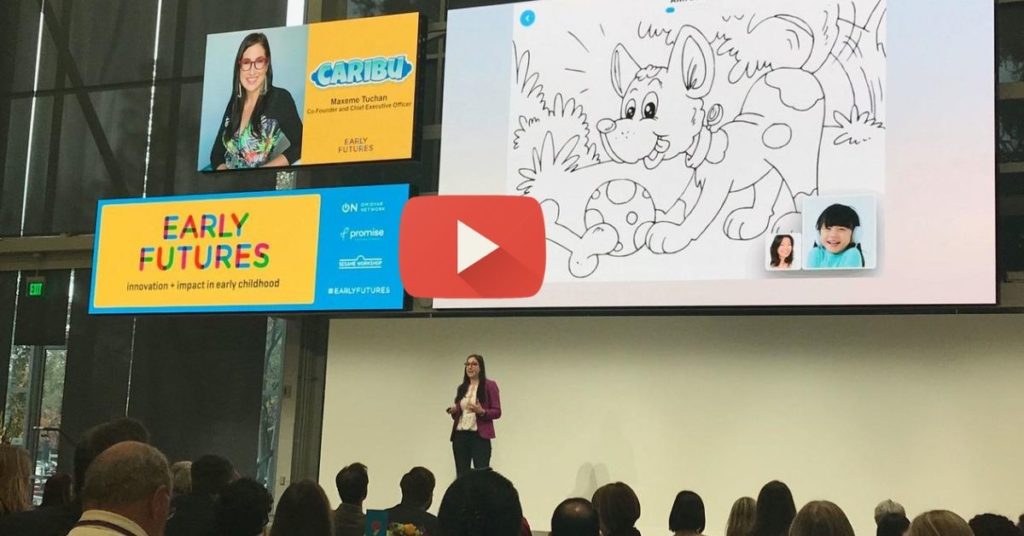You know how when you learn a brand new word you’d never known before, you suddenly start to see it everywhere? That happened to me with homework awareness. When the oldest of my two boys grew close to aging out of his Montessori preschool, I started to hear the complaints of parents with older children, citing the immense amounts of homework that was being laden onto their six, seven, and eight-year olds, not to speak of those who had middle schoolers and beyond. Stories of missed soccer games, dinner table battles, confiscation of screens, and other punitive and adversarial vignettes arose as a result of students’ unwillingness or inability to plow through hours of worksheets and endless problem sets. I heard it everywhere I turned. I hadn’t thought about homework since I was school-aged and now it plagued me like the afterimages of a horror film viewed through spread fingers. Was I destined to be as frazzled as all of these parents in a few short years?
Fortunately, educational specialists and researchers were way ahead of my fears — studies were beginning to show that for grade schoolers, piles and piles of homework had little to no beneficial effect on learning. Kids learn by doing, which happens efficiently during school hours. Experts calculate that 10 minutes of homework is sufficient for a first grader to review and galvanize the knowledge she acquired during the day. Add ten minutes more per subsequent grade level, and now you have a formula that works. Not every school or each educator adhere to this philosophy, so we sought out a place that did. The principal of my kids’ school informed us at the first meeting we attended, the best way to spend those 10, 20, or 30 minutes is reading a self-selected book. My husband and I looked at each other and smiled. This was the kind of homework we were hoping for.
Since the boys were born, my husband and I have read to them and, later, with them. Unsurprisingly, we are both readers, and know first hand that practicing reading helps to improve comprehension, increase vocabulary, internalize the rules of grammar and syntax, and learn new languages. Reading even benefits confidence levels, which can translate into better class participation and greater ease with public speaking, even when the child is listening to the reader. Perhaps the most marvelous effect of reading fiction, specifically, is that becoming engrossed in a character’s story, putting ourselves in another’s shoes even for a few minutes a day, has been found to teach and promote empathy. Though it might sound strange, the solitary act of reading can help us get along better with others.
For our youngest readers, the myriad academic benefits aren’t nearly as important (yet) as these socio-emotional ones. Not only do young children begin to relate to others through narrative, which they will later apply in real life as they build relationships with others, but the bonding that happens between reader and audience is substantial. Reading aloud to our boys became the last stop in our bedtime routine when they were infants, and it continues until now even though they are capable of reading to themselves, because we all agree it is the perfect nightcap. Sometimes, a particular storyline will call up a way to resolve a situation or reframe it; other times, a novel idea will be inspirational or provide validation for something the child is privately considering. Most of all, it allows us to spend a little more time together each day, some of the sweetest and highest-quality time, and it literally puts us on the same page. Akin to office water cooler conversations about the shows we all watch in common as adults, there is nothing better than discussing the details of a shared story with our kids.
As the kids get older, the benefits only increase. Literacy feeds the various skill sets they will need in school and then in life. No one needed to show Maxeme Tuchman all of the studies that prove these benefits. As a Cuban-American immigrant, she experienced for herself the role that reading plays in language acquisition and academic strengthening, resulting in this completely bilingual Latina’s ability to succeed within the American educational model. As a former educator for Teach for America and warrior for educational equality in her ample experience working with charter schools, in the private sector, through not-for-profit organizations, and as part of Mayor Bloomberg’s office, she also witnessed how a vibrant reading culture at home helps make up for the shortcomings of our current educational system.
In Tuchman’s opinion, literacy is not something to be left up to our schools alone. The disadvantages that plague underserved kids who lack someone to read to them early on are not easily erased, despite parent’s and educators’ best efforts later in life. Rather than continuing the Sisyphean task of cutting through the many yards of bureaucratic red tape that binds our public education system, Tuchman sought a more direct way of individualizing education and to bring reading into the homes of all. Her experience as a teacher, and likely her personal persuasions as a member of close-knit Latin family who escaped Bolshevik Russia, then Europe during the Holocaust, then Communist Cuba, Tuchman suspected that the answer was in combining reading and family through technology.

So was born Caribu, a video-call system that Tuchman describes as what would happen if Kindle and FaceTime had a baby. Helping kids arrive at kindergarten with the proper “reading nutrition” (as Tuchman calls it) is just one of the motivating factors that drove this Latina entrepreneur to co-found Caribu. Tuchman got into the business of educational technology after successful starts in politics (she was one of President Obama’s White House fellows, in addition to working with Bloomberg’s office) and education, in part because she views career as something project-based. This latest project of hers is her first entrepreneurial venture.
In some measure, Caribu makes use of Tuchman’s diverse experiences all towards the same goals she had adopted in her other projects, promoting educational equality in favor of achieving social equality. Now children all over the world, regardless of their socio-economic situation, skin color, or nationality can access literature and share it with trusted adults. With 700 titles in seven different languages so far, Caribu keeps growing its catalog, prioritizing new literature while growing its capital in order to acquire rights to classic titles. Currently, Caribu is being used in more than 148 countries. Big names, like Sesame Street and Highlights are starting to provide titles. The idea is to globalize the world of children’s literature and even out some of the imbalance of access from one corner of the world to the other.
Tuchman’s vision began with children and education, but Caribu’s scope grew beyond just that almost from its inception. The technology essentially enables an adult to read, draw, or simply chat with a child when the two are not in the same location. I know that the insertion of technology into activities like reading or drawing makes them immediately more attractive to my sons, and I imagine many children in our age to feel similarly. But what is revolutionary about Caribu is that it merges the techie appeal of a reading device with social act of sharing a book or drawing with a family member in a way that does not depend on the ebb and flow of a video conferencing signal or the magnification of the distance by a phone call.
Suddenly, even families that are physically apart, whether it be due to travel, divorce, or other circumstances, can be joined together for an intimate story time. Tuchman highlights a particularly useful and touching application of Caribu: for our military troops deployed far from home, this technology opens up spaces for developing a closer relationship to their children awaiting them at home. Realizing this great application for her product, Tuchman quickly partnered with the Blue Star Families, a non-profit organization for the sake of our military personnel, in order to provide complimentary Caribu memberships to all troops currently in service. Now, though the miles and the months apart cannot be fully erased, our servicewomen and men can truly connect with their children through a shared activity, which is so much more than shared words through a crackling phone line.
Growing up in a Latin family (and one that have to emigrate various times at that), the cultural applications of Caribu are clear to Tuchman. Not only does the interface help to bridge the divide of families separated by divorce, it is an intergenerational bridge that allows grandparents, aunts, uncles, and other extended family who live far from the child, to participate actively in their daily life. It turns out that with Caribu, Tuchman was tapping into a previously underserved market with plenty of disposable income: los abuelos.
Thinking in particular about so-called “glammas” or glamorous abuelitas who are young enough to be unintimidated by the technology and ready to spend their dollars on the grandchild they are unspeakably proud of, Tuchman foresees them being an ideal demographic for Caribu. With these baby boomer abuelitos earning up to four times what today’s millennial parents can accrue, a subscription service like Caribu is a convenient way to spend their disposable income on the apple of their eye, especially when she lives far away.
Sometimes it’s not a grandparents who bemoan the distance from their brood. Latin families tend to stick together and there are often living arrangements, which include three generations living under the same roof. I happen to live virtually next door to my mom and only about 15 minutes from my parents-in-law. We are fortunate and we know it. On the other hand, my children have some tremendously devoted aunts and uncles who would jump at the chance to experience their daily life on a much more regular basis. (I have already told them all about Caribu and they are excited to try it). I can even envision book clubs emerging amongst far-flung friends, the way that we might have made pen pals in our day.
Tuchman had all of these applications in mind as she shaped this program, having experienced the difference between living in the same city as her family and having to move to other places for her various careers. She recognizes that active time spent together is so much more valuable than a phone call. Even as an adult, already putting into practice the excellent education that reading and sharing with family provided her, she chose her own hometown — Miami — as the site for this new project. She describes Miami as her safest and most comfortable place, due to its familiarity and her family. Miami is where she has the greatest number of accrued contacts and it’s where people are there to support her through this most difficult of tasks: becoming a female, Latin entrepreneur.
For that is Tuchman’s other, underlying achievement in launching Caribu. Women face far greater scrutiny than men when pitching a startup. Taking advantage of every pitch meeting she could get, Tuchman soon realized that while men are often questioned about their future vision for their nascent projects, investors tend to press women harder on the potential risks and downfalls. She learned how to navigate these meetings, how to divert the conversation from the “what ifs?” to the “it will be greats!” Even her choice to set headquarters in Miami was thought to be a limiting choice, with less than 2% of venture capital being awarded to companies based in the region. Tuchman was encouraged to consider the Bay Area, with the assumption that to dive in with all the other tech startups and venture capitalists would more likely secure her funding. She did not heed this advice.
Not only was her chosen location a potential obstacle in launching the platform, but even her identity as a woman of color seemed to stack the deck against her. Women have historically drawn a scant 2% of venture capital, and women of color only curry about 1%. Tuchman succeeded in raising her seed money in spite of these odds. She attributes her success in part to the quality of the product she is launching and in part to the very factors that would have worked against her. By independently seeking pitch meetings and refusing to be one more fish in the Bay Area, Tuchman found that her individualistic choices actually helped her company stand out. Not only did AT&T agree to back her, providing over 1 million dollars in seed money, but Tuchman is 59th Latina to hit that over-the-million investment mark.
Maxeme Tuchman has made a series of offbeat choices in her own education, her career trajectory, and now, especially, with her startup. These choices have paid off and that is no coincidence, she says. Even more than when we work for another, launching a startup is perhaps the most personal of enterprises. The identity of the business and its success is intimately tied to the people who birth it. Tuchman’s unlikely path and global background, her decision to go after a market yet untapped in a city less prominent on investors’ maps, was the key rather than her downfall.
Asked for her best advice to the rest of us Latinas who might be considering launching our own projects, she strongly encourages us to not be afraid to be exactly who we are, cautioning us not to tamp down our latinidad or try to whitewash it. Like a proud and true Miamian, Tuchman calls for us to take that Latin passion and use it in our business, to “jump in, chanclas first.”
For Image credit or remove please email for immediate removal - info@belatina.com







































